|
|
TPB thinking circa 2003
COMMUNITY DEVELOPMENT
|
|
COMMUNITY CENTRIC SUSTAINABLE DEVELOPMENT
|
TPB comment: I carried out hundreds, if not thousands of assignments for the World Bank, the United Nations and others for the best part of 30 years starting in 1978. Many of these assignments were the monitoring and evaluation (M&E) of development projects. While essentially all of the projects being funded by the international development community were well intentioned, rather few had much sustained impact.
The graphics below were developed around 2003 to show how I approached M&E and how this was different from other development experts. Most of the experts were comparing the activities undertaken by the project with the activities described in the project planning and financing documentation, and drawing the conclusion that if the activities were completed then the project was successful. In my view, this completely missed the point of development investment. In my view the purpose of development expenditure was to achieve progress, and for this progress to be sustained beyond the lifetime of the project. This is basic to good financial management and this is what these slides attempt to show. The purpose of any economic activity is to achieve improvement ... and conventional financial accountancy does the accounting and reporting of this in a very powerful way using profit and loss accounts and balance sheet accounts which handle flow and change in state respectively.
|
The graphics below show an important difference between two projects. In one case, the costs of the activities are quite modest and the cost of the activities quite modest. In the second case, the activities are somewhat larger, and the costs are also larger. Based on these limited metrics it is difficult to communicate the difference in the performance of the two sets of activities.
The UN and the World Bank have used this sort of monitoring and evaluation (M&E) in trying to get control and understand the performance of their projects. In the end, this methodology cannot get the answers that these organizae need to manage their operations.
|
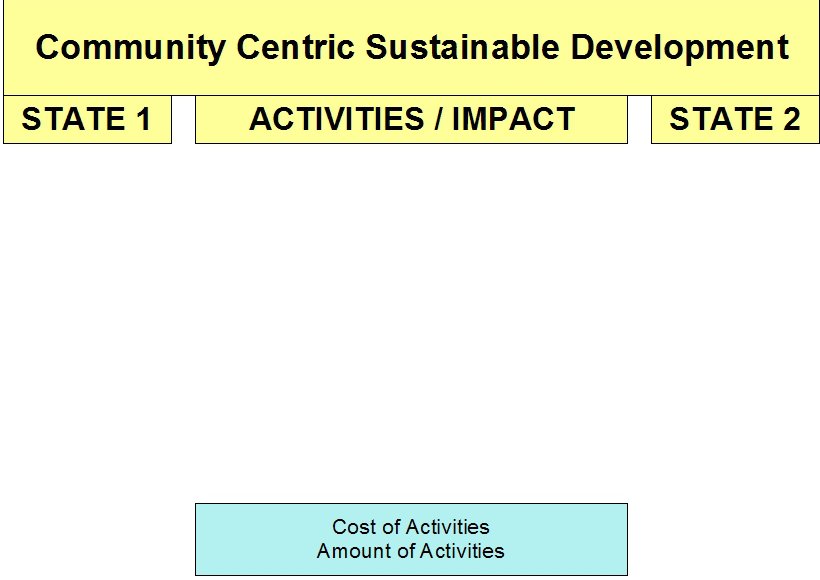
|

|
Something better is clearly needed. The following is a step towards something that is very much better.
|
|
Measure Change in State and you Measure Progress
|

|
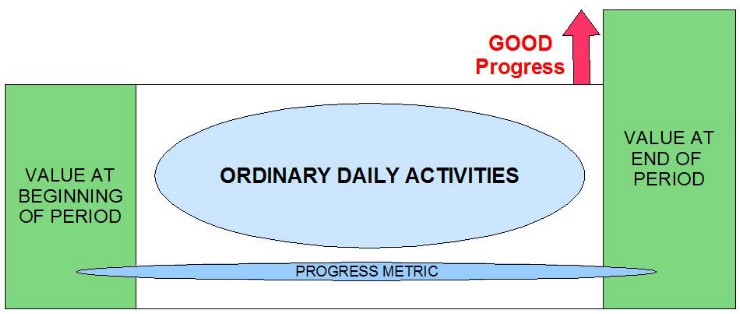
|

|
|
Beginning of Period STATE -- ACTIVITIES / FLOW -- End of Period STATE
|
CHANGE in STATE shows very clearly whether there is PROGRESS or not over time.
Using this approach to measuring progress reduces the amount of data collection significantly. There is no need to collect data about the ACTIVITIES, just the data about the STATE.
|
|
The following slides build on the concept of progress being an improvement in STATE as described here ...
|

|

|
The performance of these two communities is very different. In one case the the state of the place is improving, and in the other, the state is deteriorating. The progress of the place may be determined merely by knowing the state of the place while not knowing anything about the activities that are causing the change.
The impact of place on quality of life is very substantial, and quality of life is generally seen to be better when the state of the place is getting better, and seen to be getting worse when the state of the place is getting worse.
|
When the totality of the activities are 'value adding' the state of the place improves. This is shown in the left graphic below. When the totality of the activities results in value destruction, the state of the place degrades.
|
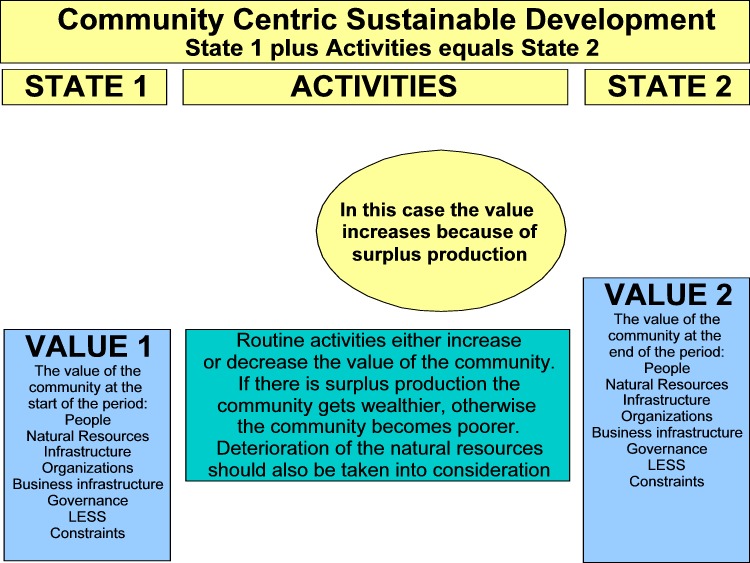
|
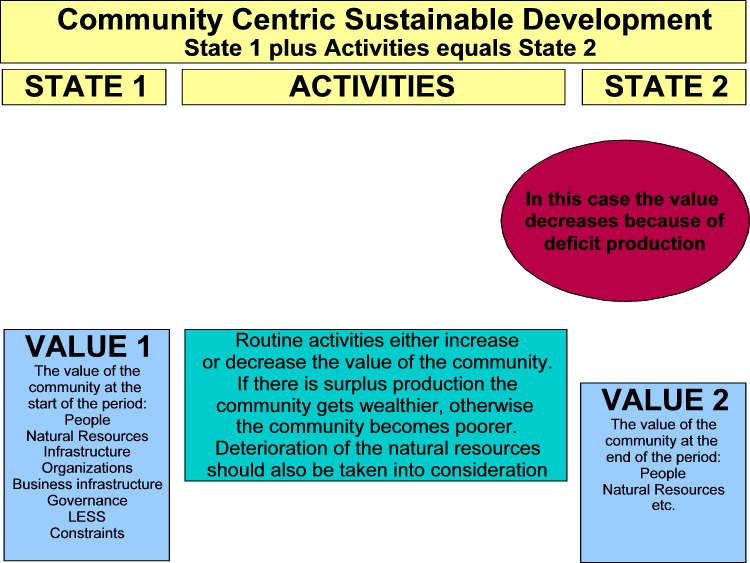
|
The addition of development assistance does not operate in a simple way to improve progress. If the development assistance is well designed it can generate impact both with the existing economic activities and from within the development activities and the result is a stong improvement in the state of the community. This is shown in the left graphic below.
But this is not the case when the development assistance is badly designed. Frequently in badly designed development assistance, the routine activities of the communities are weakened. This comes about because of various sorts of shortages that emerge, but especially because people migrate to the employment offered by the development initiatives. Taken together this results in the state ofd the community degrading in spite the injection of development resources into the communtiy. This is shown in the right graphic below.
|
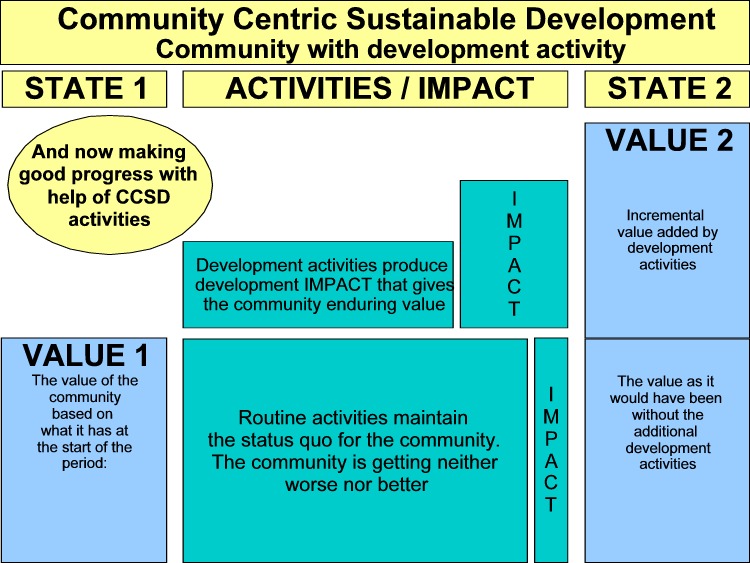
|
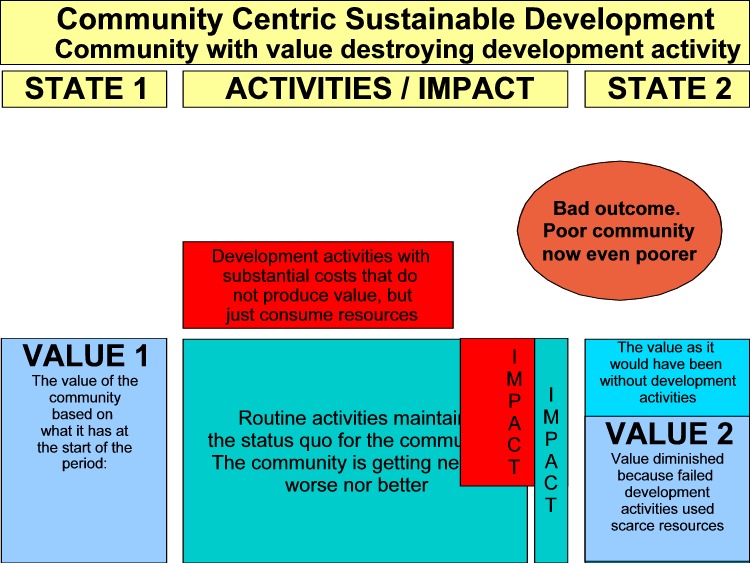
|
|
|
|

